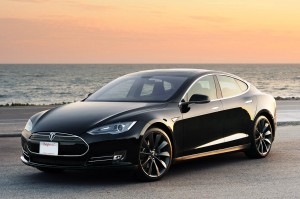I’ve heard people refer to self-driving cars as nothing more than a “George Jetsons” future that won’t really happen, or at least is decades away. But Tesla just brought that reality into the present.
Yesterday the automaker announced that all their new cars going forward will be equipped with the hardware for full automation. That includes:
Eight surround cameras provide 360 degrees of visibility around the car at up to 250 meters of range. Twelve updated ultrasonic sensors complement this vision, allowing for detection of both hard and soft objects at nearly twice the distance of the prior system. A forward-facing radar with enhanced processing provides additional data about the world on a redundant wavelength that is able to see through heavy rain, fog, dust and even the car ahead.
The software won’t be activated right away, and customers will have to pay to access both the hardware and the software. Still, the era of autonomy is now within reach, and it will require policy makers to get ahead of the curve to ensure it doesn’t increase traffic.
The no-regrets solutions? Encourage car-sharing instead of vehicle ownership, and start charging drivers for the miles they drive rather than taxing them based on fuel.
You can see Tesla’s promotional video here, showing the self-drive in action:
The company is at it again. With a software update sent over the air to anyone who bought a Tesla since the fall of 2014 and is willing to pay $2500, the vehicles will now be able to do the following:
Autopilot allows Model S to steer within a lane, change lanes with the simple tap of a turn signal, and manage speed by using active, traffic-aware cruise control. Digital control of motors, brakes, and steering helps avoid collisions from the front and sides, as well as preventing the car from wandering off the road. Your car can also scan for a parking space, alert you when one is available, and parallel park on command.
Musk keeps making big promises, but this latest rollout is evidence that he might be able to actually keep them. In particular, he recently pledged that the company will be making 745-mile range batteries in completely autonomous vehicles by 2020.
What would this mean for the environment? To quote Trump, HUGE. On the EV side, it means an accelerated move from petroleum fuels to electricity in battery electric vehicles. It means more mobile battery storage that can provide grid services like smart charging (soaking up surplus solar power, for example) and possibly vehicle-to-grid power (sending electricity back to the grid from the car battery when it’s needed). And it means cheaper batteries more generally that can be used for stand-alone energy storage.
But it also means that a revolution in passenger vehicle travel could be around the corner. With autonomous vehicles, cars can drive more efficiently and therefore reduce tailpipe emissions, and they potentially could be more easily rented on-demand, meaning reduced auto ownership and the associated need for real estate devoted to parking (downtown parking garages and home garages, most prominently).
So even if you’re not a technophile or car person, there’s plenty of reason to be optimistic with this latest development.



